We ran over 40 miles in the Hoka Skyward X — here's the verdict
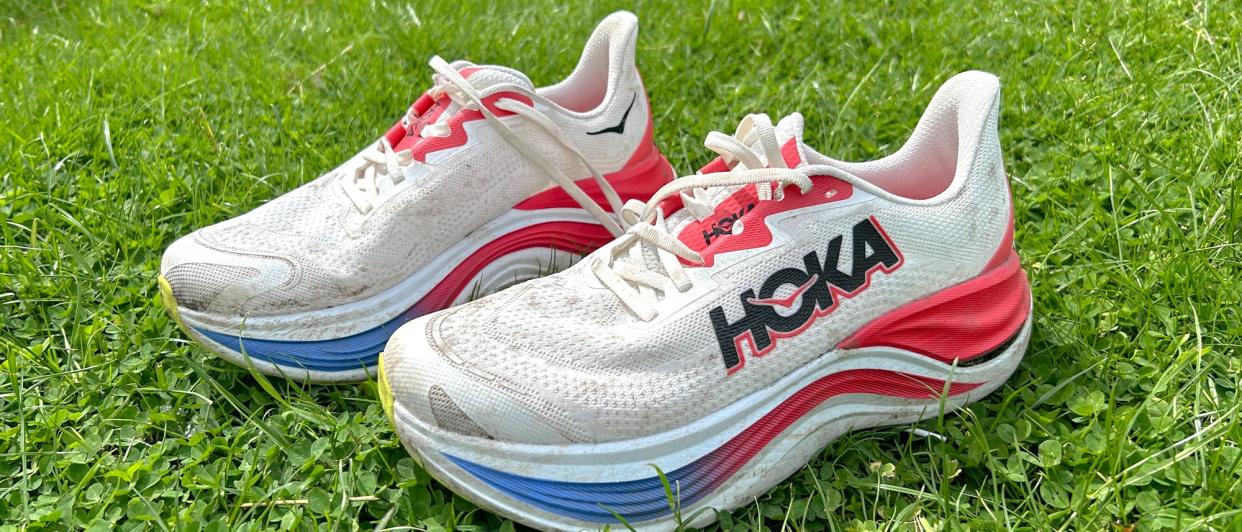
The Skyward X is Hoka’s latest super trainer and its most stacked shoe to date. The shoe uses a new generation Peba midsole, a critical EVA frame underfoot and a carbon plate.
But, this is not one of the best carbon plate running shoes you’re going to wear on race day. That is unless you want to risk being banned from participating, as its stack height exceeds the limit set by World Athletics.
Eager to see if this super trainer is worth its price tag, my colleague Nick Harris-Fry and I both clocked up the miles in the Hoka Skyward X.
Hoka Skyward X: Price and availability
The Hoka Skyward X officially launched in April 2024 and is available to purchase directly from Hoka and other third-party retailers. Priced at $225 / £184, it’s more expensive than two of the brand’s other max-cushioned shoes, the Bondi X ($200) and the Mach X ($180).
Hoka Skyward X: Design
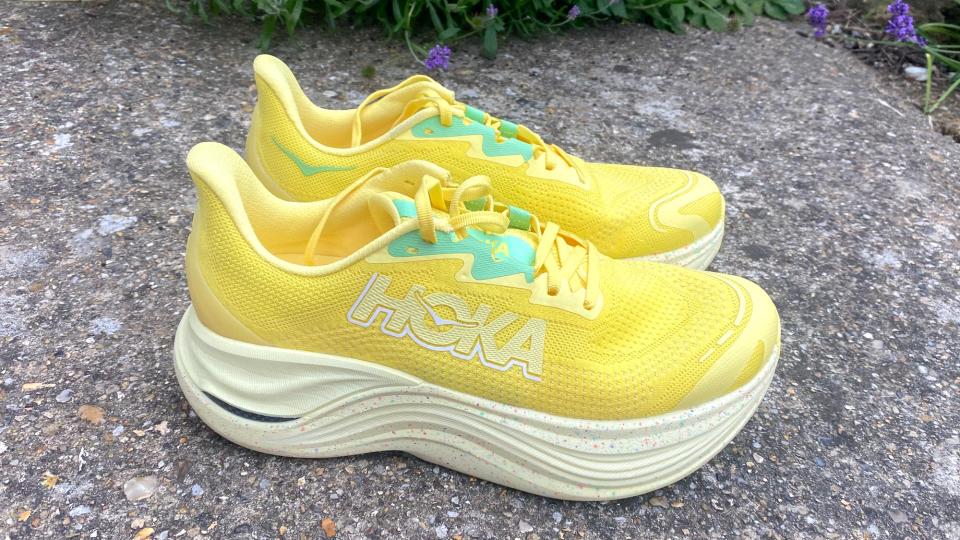
The shoe comes in two colorways for men and women. You can choose the vibrant Lemonade/Sunlight yellow pair, which I brightened the roads with during testing, or the multicolored Blanc le Blanc/Swim Day colorway that Nick sported during his test runs.
The shoe features a whopping 48mm heel stack height and 43mm at the forefoot, and is Hoka’s most cushioned shoe to date. With this kind of stack height, you should expect to experience some pretty impressive cushioning and shock absorption on your longer distances and easy miles.
Upper
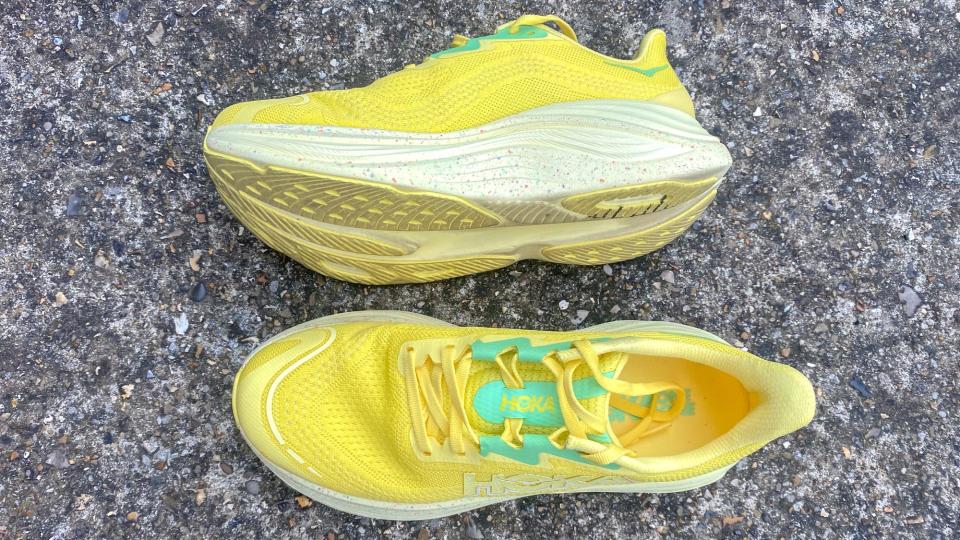
The Skyward’s upper is made from flat knit and is fairly thick. It features sections of perforated fabric to enhance the shoe’s breathability and the tongue and heel collar are both well padded for a comfortable fit.
The shoe features both internal and external heel counters to offer maximum support and there are extra eyelids in the lacing system for those who want to feel extra secure with a runner’s knot.
Midsole
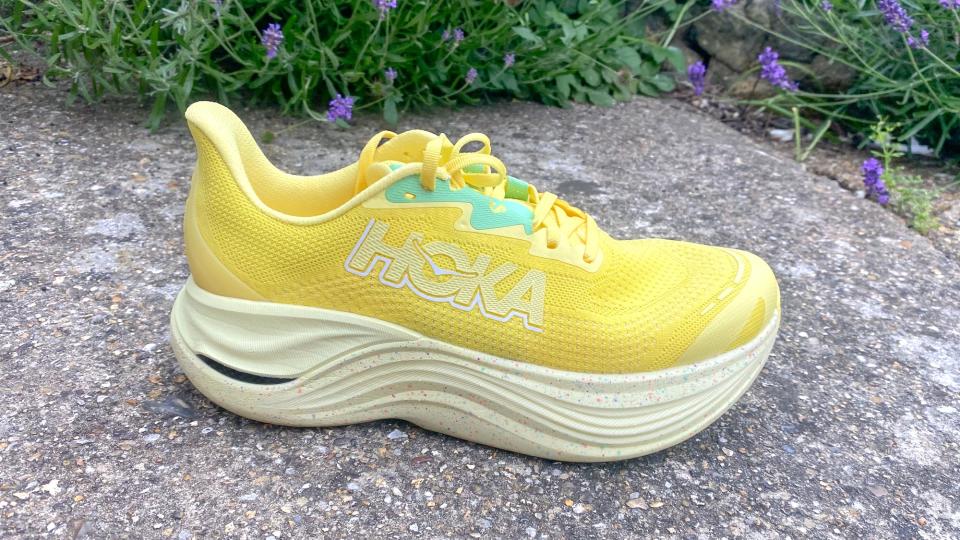
The midsole of the Skyward X boasts a tri-layered design. Beneath the foot sits a layer of PEBA foam, which adds a lively bounce to each stride.
Below this lies a convex-shaped carbon-fiber plate, engineered to compress when your foot lands and spring back during takeoff. Then you have an EVA foam base, combined with Hoka's signature rocker shape to smoothen up your transitions
Outer
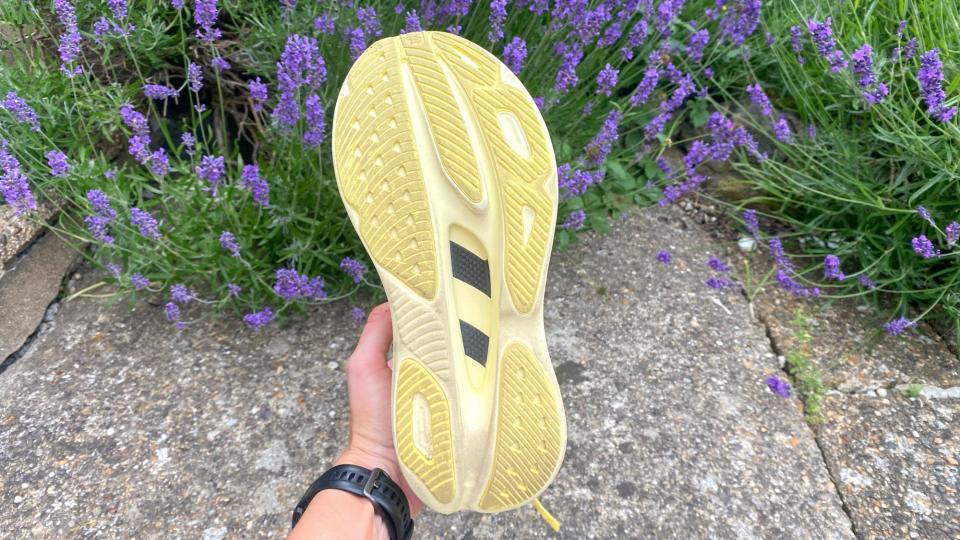
The outer of the Hoka Skyward X is designed with a high abrasion rubber and various lugs across the base of the outsole to enhance the shoe’s grip. I started writing this review after clocking just over 30 miles in the Skyward X, and the outer is still in great condition.
Hoka Skyward X review: Fit
Jessica Downey (JD): The Hoka Skyward X fits true to size for my regular running shoe size, and the width felt comfortable for my narrow feet. Initially, I experienced a slight issue with heel lockdown during my first few runs, but looping my laces through the extra eyelets was a quick and effective fix.
Note that Hoka does not offer a wide fit option for the Skyward X, which might be a consideration for runners with wider feet who usually opt for brands providing wider fit choices.
Nick Harris-Fry (NHF): I had no problems with the fit of the Hoka Skyward X in my normal running shoe size, the same size I’ve used for other Hoka shoes like the Clifton 9 and Mach 6. I would note that I have a narrow foot though, and it might be a bit snug for those with wider feet.
Hoka Skyward X review: Running performance
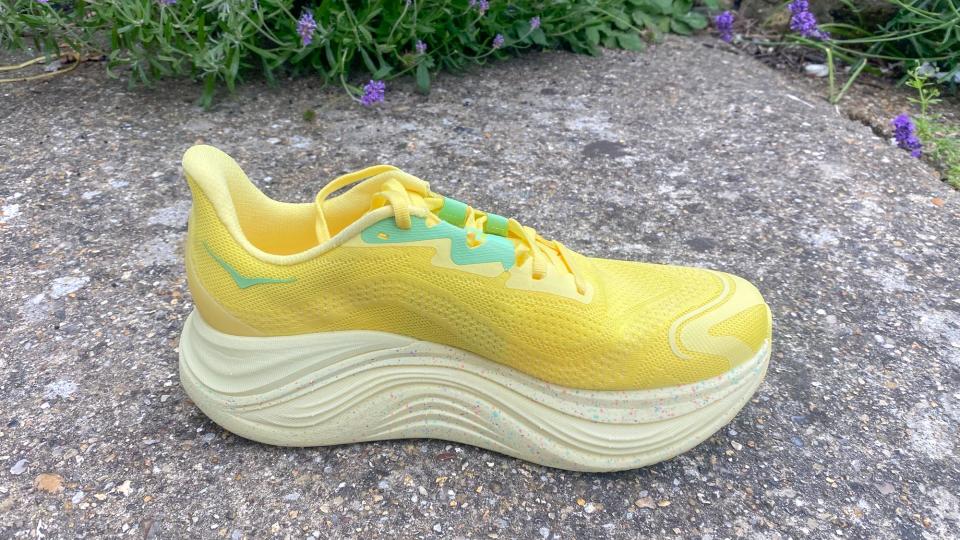
JD: I was a little apprehensive about how stable the shoe would feel when I first pulled the Skyward X out of the box to find a very chunky shoe in front of me. But despite the towering stack height, the shoe felt way more stable than it looks thanks to the wide base and EVA frame.
As soon as I hit the pavement, the underfoot experience was great - the Skyward X felt springy, cushioned and protective. I liked the extra snap the super foamy midsole gave me and noticed the carbon plate helped stabilize things here. Paired with the late-stage meta rocker the shoe offered a smooth and efficient ride.
Overall, I felt like the Skyward X does a great job at absorbing impact and this was needed on longer runs and during recovery miles where you want to make things easier on the old legs.
But I can’t say I’d be rushing to use the Skyward X for anything too speedy. After all, it’s a big and chunky design, which means they aren’t the lightest of running shoes.
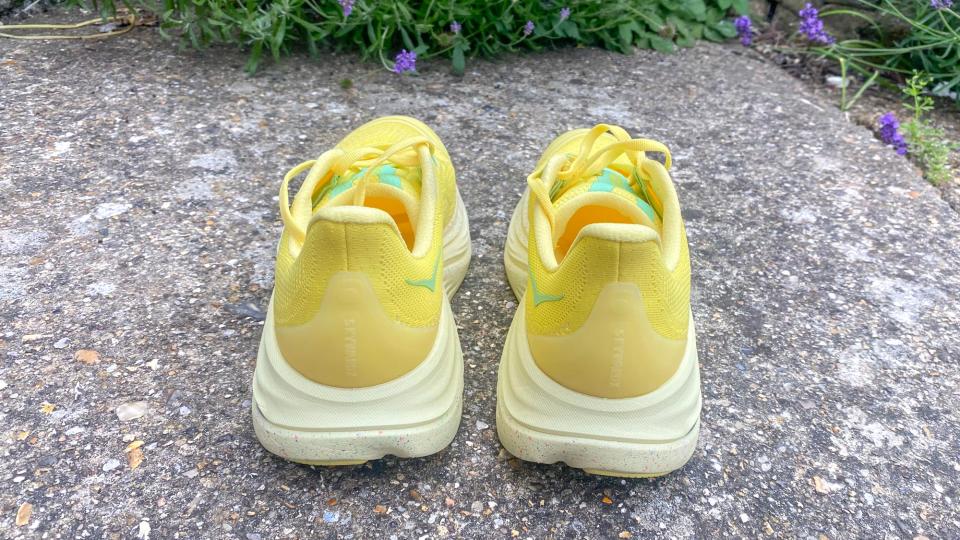
NHF: Like Jess, I almost held my breath when taking my first steps in the Skyward X, assuming it would be a very wobbly high-stack shoe in the mould of the Adidas Prime X Strung. However, it’s a lot more stable than it looks, and the ride also belies its size and weight, because it’s a smooth and surprisingly sprightly shoe.
I’ve run 40 miles in the Skyward X and have found it protects the legs well while helping me to tick along on long runs in particular. My favourite run in the shoe was a 15-mile Sunday long run on a hilly route, where the foam in the midsole cushioned the impact of the downhills after a long week of training.
My pace on this run and other relatively easy efforts was faster than I expected given the effort involved, which is presumably down to the efficiency benefits of the plate and PEBA foam. It’s a shoe that shines for big mileage weeks and a fun one to use for easy and long runs, and I particularly liked pulling it on the day after a tough workout for recovery runs.
However, when it came to faster runs at tempo pace or faster, the size of the Skyward X did start to count against it. While it’s bouncy, I’d prefer to be in a lighter plated trainer like the Saucony Endorphin Speed 4 or Hoka’s own Mach X.
Should you buy the Hoka Skyward X?
JD: If you're a loyal Hoka fan who enjoys a highly stacked shoe, the Hoka Skyward X will be an exciting addition to your running shoe lineup. Even if you aren't a Hoka enthusiast but are seeking a super trainer to cushion your miles, you'll find a lot to love about the Skyward X.
I wish this shoe had launched when I was marathon training earlier this year as it's perfect for high-mileage running, helping to minimize impact on the legs. While it's not the best for speed, if you're looking for a super shoe that also offers speed, consider the Asics Superblast.
NHF: The Hoka Skyward X is very good at the job it was designed to do, which is to deliver a protective, stable and bouncy ride for relaxed training runs. However, it’s very expensive for that job, which I’m happy to do in a cheaper cushioned running shoe like the Puma Velocity Nitro 3 or Brooks Glycerin 21 myself.
Compared to other high-stack training shoes with a plate, it lacks versatility. Shoes like the Saucony Endorphin Speed 4, Asics Superblast or the new Mizuno Neo Vista offer comfort on easy runs while being lighter and faster than the Skyward X for your speedwork. The Endorphin Speed 4 and Neo Vista are considerably cheaper as well.


